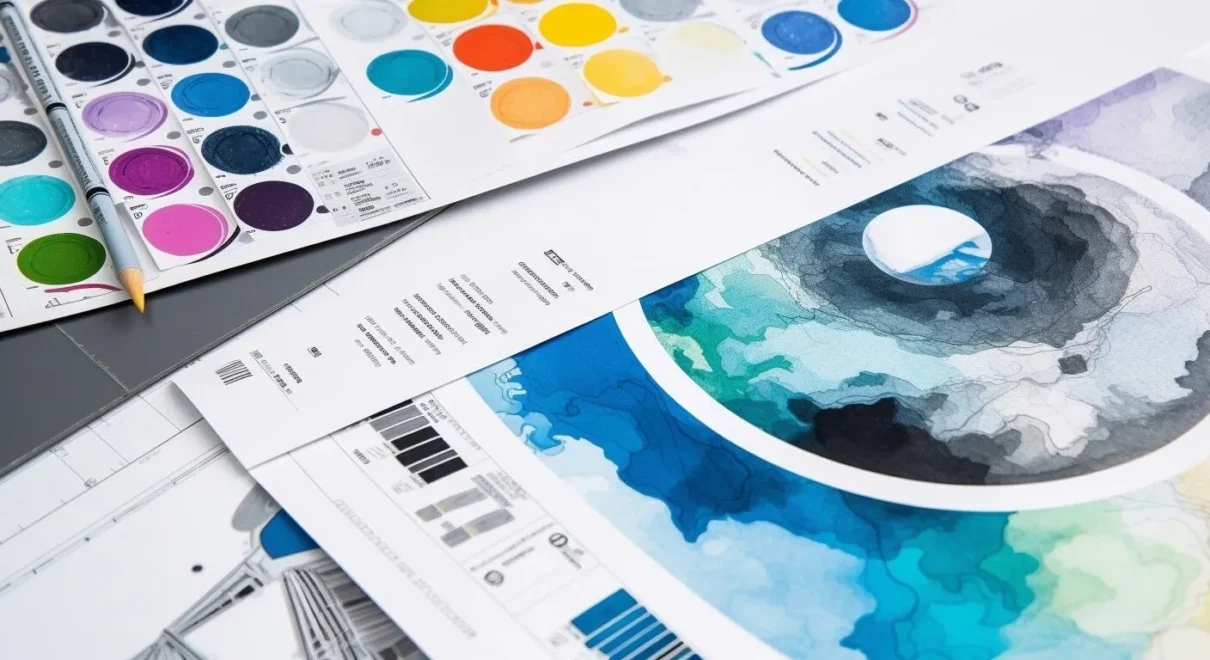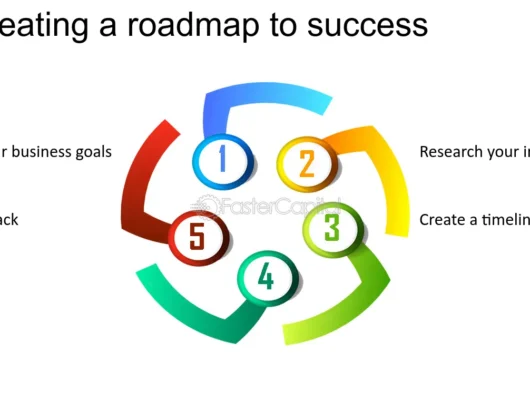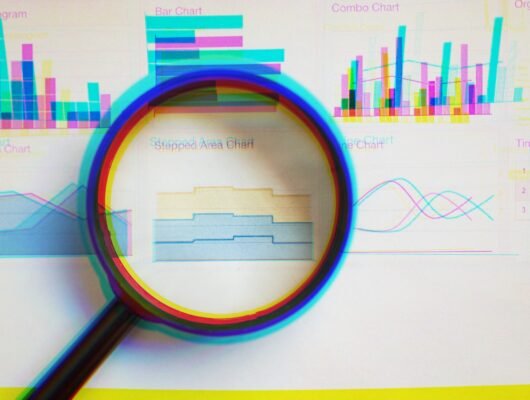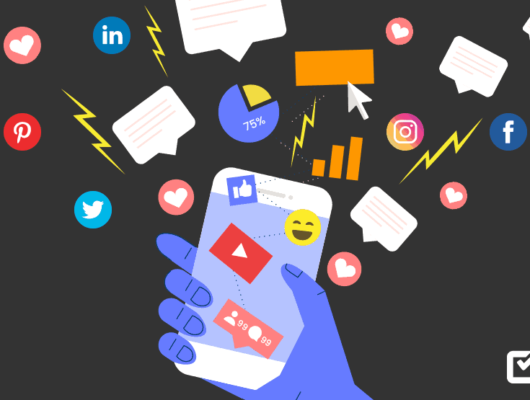In a world increasingly dominated by digital media, print graphic design remains a powerful tool for brands to create lasting impressions. Whether it’s a business card, brochure, poster, or packaging, print design offers a tactile experience that digital cannot replicate.
It engages the senses, providing a physical connection to a brand that can enhance its memorability and impact. This article explores the significance of print graphic design, the key elements involved, and how to create effective and visually striking print materials.
What Is Print Graphic Design?
Print graphic design refers to the creation of visual content for physical media. This includes designing everything from business cards and flyers to magazines, packaging, and billboards. Unlike digital design, which is displayed on screens, print design is created with the intention of being produced on a physical surface, such as paper, cardboard, or fabric. The process involves a deep understanding of layout, color theory, typography, and printing techniques to ensure that the final product is both visually appealing and functional.
Why Print Graphic Design Still Matters
1. Tangible Brand Presence
Print materials provide a physical, tangible connection to your brand. Whether it’s a brochure handed out at a trade show or a beautifully designed business card exchanged during a meeting, print design gives your audience something they can touch, hold, and take with them. This tangibility often leads to a more memorable and impactful brand experience.
2. High Perceived Value
Well-designed print materials can convey a sense of quality and professionalism. In a world where digital content is often fleeting, print design can have a lasting presence. A high-quality printed piece, such as a glossy brochure or an elegantly designed invitation, often carries a higher perceived value than its digital counterpart, making it a powerful tool for communicating the importance and quality of your brand.
3. Enhanced Credibility
Print materials often lend credibility to your brand, especially when targeting certain audiences. For instance, a professionally designed annual report, a well-crafted catalog, or a thoughtfully produced direct mail piece can build trust and authority with clients, customers, or stakeholders. Print design suggests that your brand is established and committed to delivering quality.
4. Targeted Marketing
Print design allows for highly targeted marketing efforts. Whether it’s a direct mail campaign aimed at a specific demographic or promotional materials for a local event, print design can be tailored to speak directly to a particular audience. This level of customization can lead to more effective communication and stronger engagement.
5. Complementary to Digital Marketing
Print design doesn’t have to compete with digital; instead, it can complement your digital marketing efforts. For example, a print advertisement can drive traffic to your website, or a physical catalog can enhance an online shopping experience. Integrating print and digital marketing strategies can create a more comprehensive and cohesive brand experience.
Key Elements of Print Graphic Design
1. Layout and Composition
The layout is the foundation of any print design. It involves arranging text, images, and other visual elements on the page in a way that is both aesthetically pleasing and functional. A good layout ensures that the content is easy to read and guides the viewer’s eye through the design in a logical and engaging way. Elements such as grids, margins, and alignment play a crucial role in creating a balanced and effective layout.
2. Color Theory
Color is a powerful tool in print design, capable of evoking emotions, conveying messages, and creating visual interest. Understanding color theory is essential for creating harmonious color schemes that align with your brand and appeal to your target audience. In print design, it’s also important to consider how colors will appear when printed, as they can look different on paper compared to a screen. Designers often use the CMYK color model for print projects to ensure color accuracy.
3. Typography
Typography is the art of arranging type to make written language legible, readable, and visually appealing. In print design, typography plays a key role in setting the tone and style of the piece. Choosing the right fonts, sizes, and spacing is crucial for readability and for conveying the intended message. Typography should complement the overall design and align with the brand’s voice and personality.
4. Imagery and Graphics
Images, illustrations, and graphics are central to print design, providing visual interest and helping to communicate the message. High-resolution images are essential in print design to ensure clarity and sharpness. The choice of imagery should be relevant to the content and consistent with the brand’s aesthetic. Custom illustrations or infographics can also be used to make the design more unique and engaging.
5. Printing Techniques and Materials
Understanding printing techniques and materials is crucial in print graphic design. Different printing methods, such as offset printing, digital printing, or screen printing, offer varying levels of quality and cost-effectiveness. The choice of paper, ink, and finishing techniques (such as embossing, foil stamping, or varnishing) can greatly affect the final product’s look and feel. A good designer will consider these factors from the start to ensure the design translates well from screen to print.
6. Brand Consistency
Consistency is key in all forms of design, and print is no exception. Your print materials should be consistent with your brand’s overall visual identity, including logo usage, color schemes, typography, and messaging. This ensures that all printed materials, from business cards to brochures, contribute to a cohesive and recognizable brand image.
The Print Graphic Design Process
1. Concept Development
The first step in the print design process is concept development. This involves brainstorming ideas, researching competitors, and identifying the goals of the print piece. During this stage, designers consider the target audience, the message to be conveyed, and the desired outcome of the piece. Sketches or mood boards may be created to explore different concepts and visual directions.
2. Design and Layout
Once the concept is finalized, the design phase begins. This involves creating the layout, choosing typography, selecting color schemes, and incorporating images or illustrations. Designers use software like Adobe InDesign, Illustrator, or Photoshop to bring their concepts to life. Multiple drafts are often created, with revisions based on client feedback.
3. Proofing and Revisions
Before going to print, it’s essential to proof the design carefully. This involves checking for any errors in text, ensuring images are high resolution, and confirming that colors are accurate. Proofing also includes reviewing the layout to ensure everything is aligned and spaced correctly. Based on feedback, designers may make revisions to improve the design before final approval.
4. Pre-Press Preparation
Once the design is approved, it needs to be prepared for printing. This includes converting the design to the appropriate file format (such as PDF), setting the correct bleed and crop marks, and ensuring that all fonts and images are embedded. Designers must also check that the colors are set to CMYK for print production. Pre-press preparation is a critical step to ensure the design prints accurately and as intended.
5. Printing and Production
The final design is then sent to the printer. Depending on the project, different printing techniques and materials will be used. Designers often work closely with the printer to oversee the production process and ensure the final product meets quality standards. This may involve approving test prints or making last-minute adjustments to ensure the best possible outcome.
6. Distribution
After printing, the materials are ready for distribution. Whether it’s handing out business cards, mailing brochures, or displaying posters, the final step is getting the printed materials into the hands of your audience. The distribution strategy should align with your overall marketing goals to maximize the impact of the print design.
Common Print Graphic Design Mistakes to Avoid
1. Poor Image Quality
One of the most common mistakes in print design is using low-resolution images. Images that look fine on a screen can appear blurry or pixelated when printed. Always ensure that images are high resolution (typically 300 dpi) and suitable for print to maintain clarity and sharpness.
2. Ignoring Bleed and Margins
Bleed refers to the area of the design that extends beyond the edge of the page, which is trimmed after printing. Failing to account for bleed can result in white edges or important elements being cut off. Similarly, neglecting margins can make the design look crowded or cause text to be too close to the edge. Always include proper bleed and margins in your design files.
3. Overcomplicating the Design
Simplicity is often more effective in print design. Overcomplicating the design with too many fonts, colors, or elements can make it look cluttered and difficult to read. Focus on creating a clean, balanced design that effectively communicates the message without overwhelming the viewer.
4. Inconsistent Branding
Inconsistent branding can weaken your overall brand identity. Ensure that all print materials are consistent with your brand’s visual guidelines, including color schemes, typography, and logo usage. Consistency helps build recognition and trust with your audience.
Conclusion
Print graphic design remains a vital aspect of branding and marketing, offering a unique and powerful way to connect with your audience.
By focusing on key elements like layout, color, typography, and printing techniques, you can create visually stunning and effective print materials that leave a lasting impression.
Whether you’re designing a business card, a brochure, or a billboard, investing in professional print graphic design is essential for building a strong, credible, and memorable brand.






